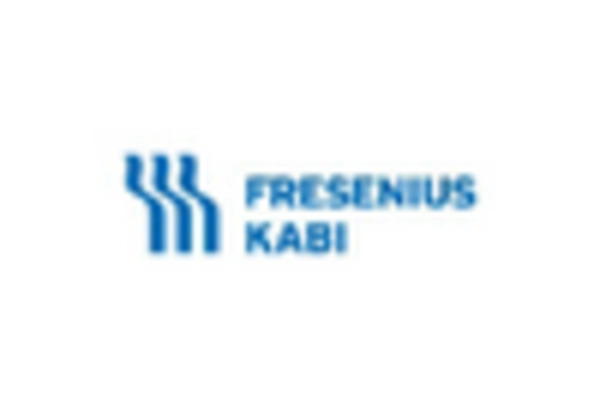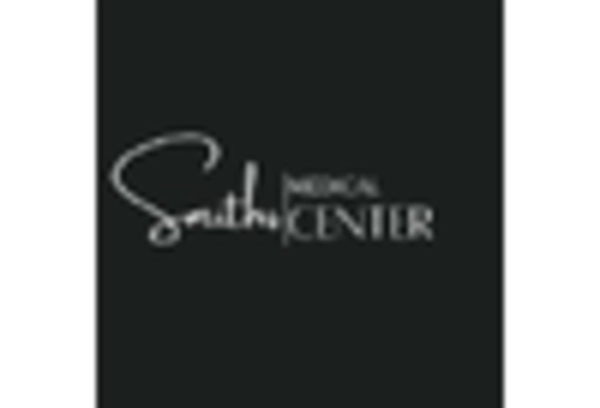Rising Surgical Procedures
The increasing number of surgical procedures in the US is a primary driver for the anesthesia delivery-devices market. As healthcare facilities expand their surgical capabilities, the demand for effective anesthesia management rises. In 2025, it is estimated that over 50 million surgical procedures will be performed annually in the US, necessitating advanced anesthesia delivery systems. This surge in surgical activity is likely to propel the market forward, as hospitals and surgical centers seek to enhance patient safety and improve outcomes. The anesthesia delivery-devices market is thus positioned to benefit from this trend, as healthcare providers invest in state-of-the-art equipment to meet the growing demand for surgical interventions.
Increased Focus on Patient Safety
Patient safety remains a paramount concern in healthcare, driving advancements in the anesthesia delivery-devices market. The emphasis on minimizing risks associated with anesthesia administration has led to the development of more sophisticated devices that enhance monitoring and control. In 2025, the market is projected to grow by approximately 8% as healthcare institutions prioritize technologies that ensure patient safety during procedures. This focus on safety is reflected in the adoption of devices equipped with advanced features such as real-time monitoring and automated drug delivery systems. Consequently, the anesthesia delivery-devices market is likely to see increased investment as hospitals strive to comply with stringent safety standards.
Aging Population and Chronic Conditions
The aging population in the US is a significant driver of the anesthesia delivery-devices market. As individuals age, they often require more medical interventions, including surgeries that necessitate anesthesia. By 2025, it is projected that over 20% of the US population will be over 65 years old, leading to an increased demand for surgical procedures. This demographic shift is likely to result in a corresponding rise in the need for advanced anesthesia delivery systems. The anesthesia delivery-devices market is thus poised for growth as healthcare providers adapt to the needs of an older population, ensuring that they have access to safe and effective anesthesia solutions.
Technological Integration in Healthcare
The integration of technology in healthcare is transforming the anesthesia delivery-devices market. Innovations such as electronic health records (EHR) and telemedicine are enhancing the efficiency of anesthesia management. In 2025, the market is expected to witness a growth rate of around 7% as healthcare providers increasingly adopt digital solutions. These technologies facilitate better communication among medical teams and improve patient data accessibility, leading to more informed decision-making during anesthesia administration. The anesthesia delivery-devices market is thus benefiting from this trend, as providers seek to leverage technology to optimize patient care and streamline operational processes.
Expansion of Ambulatory Surgical Centers
The growth of ambulatory surgical centers (ASCs) is significantly impacting the anesthesia delivery-devices market. ASCs are increasingly preferred for outpatient procedures due to their efficiency and cost-effectiveness. In 2025, the number of ASCs in the US is expected to exceed 6,000, driving demand for specialized anesthesia delivery devices tailored for outpatient settings. This trend indicates a shift towards more flexible and portable anesthesia solutions, as ASCs require equipment that can accommodate a variety of procedures. The anesthesia delivery-devices market is likely to benefit from this expansion, as manufacturers develop products that meet the unique needs of ASCs, enhancing patient care and operational efficiency.

















Leave a Comment